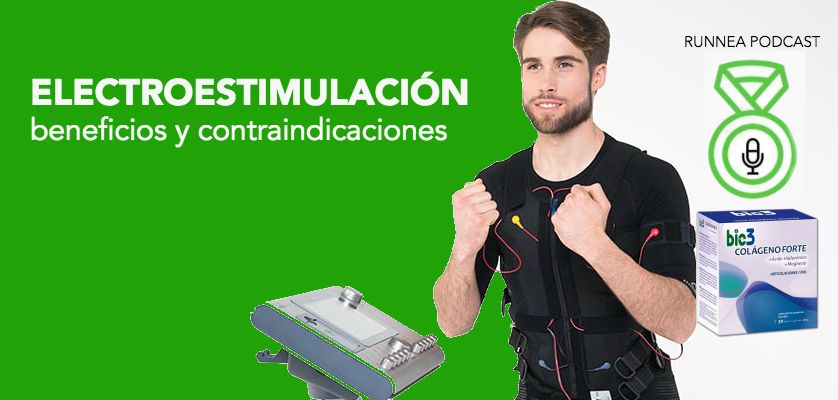In recent years it has become fashionable a technique that although it seems relatively modern is not so much and that claims to have miraculous effects on our body when shaping it with little effort, that is, as a kind of passive gymnastics that can be done while watching TV or surfing with our tablet sitting on the couch at home. On the other hand, we have another variant of this technique, more in line with reality, which consists of applying it when we are exercising.
We are talking about electrostimulation or rather muscle electrostimulation (EMS) or electrical neuromuscular stimulation (ENE), as Wikipedia calls it.
Listen to Runnea Podcast
This form of electrotherapy uses electric current to cause muscle contraction: the electrostimulator is a current generator that is connected to our body by means of strategically placed electrodes, through which it sends an electrical impulse to the motor nerve and this causes, in a somewhat 'artificial' way, the contraction of the muscle.
Electrostimulation, contrary to what many people might think, is not as contemporary as it might seem. This technique began to be developed in the 1960s and 1970s in the former Union of Soviet Socialist Republics (USSR) in the world of sports to enhance training performance. Subsequently, it has been transferred to the campo of medicine, being used for therapeutic and rehabilitative purposes, especially when treating certain types of ailments and injuries.

. Most of them are designed to be used at home without any risk for users and come factory-configured with programs already defined according to the treatment we want to follow: recover muscle tone, reduce pain or reduce inflammation, among others.
In short, this electrotherapy technique can be separated into two large blocks, always depending on the purpose for which it is used: electrostimulation as a complement to training and electrostimulation as a therapeutic purpose.
Electro-stimulation as a complementary part of training
Nowadays, electro-stimulators have become in a short space of time a kind of attractive gadget for a large number of people who carry out a complete and exhaustive workout, being one of the complementary methods for working different muscle groups in isolation. The evolution of these devices is such that in some elite gyms in cities such as Madrid, Barcelona or Seville, they are already being used by some users in the form of vests and leggings that transmit electrical impulses while they exercise on the different machines.
However, it has not yet been possible to refute with scientific studies whether, how and to what extent it contributes to improving training performance. In any case, it is undeniable that electrostimulation is increasingly used as a complementary part of training and is gaining more and more followers every day. Although its most frequent use tends to be static - as in the treatment of an injury - it seems to be much more effective in a dynamic way.
Electrostimulation as a treatment to recover from an injury
When we practice any sport we run the risk of injury with all that this entails. In the best case scenario, it would make us unable to run for a certain period of time. In the worst case, we may fracture a bone in a limb and have to be immobilized for several weeks. In this case, the musculature of that part of the body, not being exercised, atrophies very quickly.
It is precisely in this hypothetical scenario when electrostimulation takes on great importance, since it is essential to recover the mobility and flexibility of the joints that have remained immobile for a certain period of time. An excellent way to work and exercise the musculature to recover its optimal tone is this electrotherapy technique.
Electrical neuromuscular stimulation makes it possible to work the affected muscles statically, which is very beneficial during the first few days, once the period of immobilization has passed. Depending on the program chosen by the user, the duration and intensity of the electrical impulse will vary.
Although it is advisable to consult a physiotherapist, and although the muscular electrostimulation devices for private use are designed to avoid any type of damage, it is advisable to read the manufacturer's manual and always use it with common sense.
In short, electrical neuromuscular stimulation can be very useful for recovering from a specific injury and can also be used as a complement to training sessions, but without the miraculous effects that advertising and marketing campaigns try to sell us.

